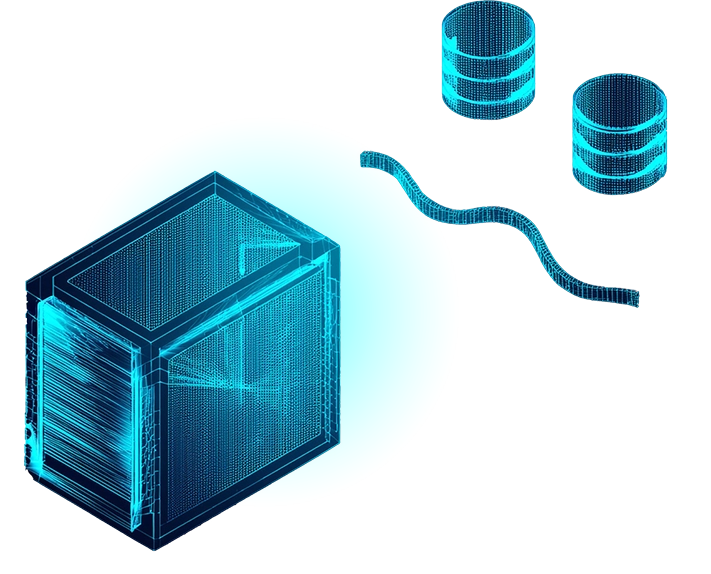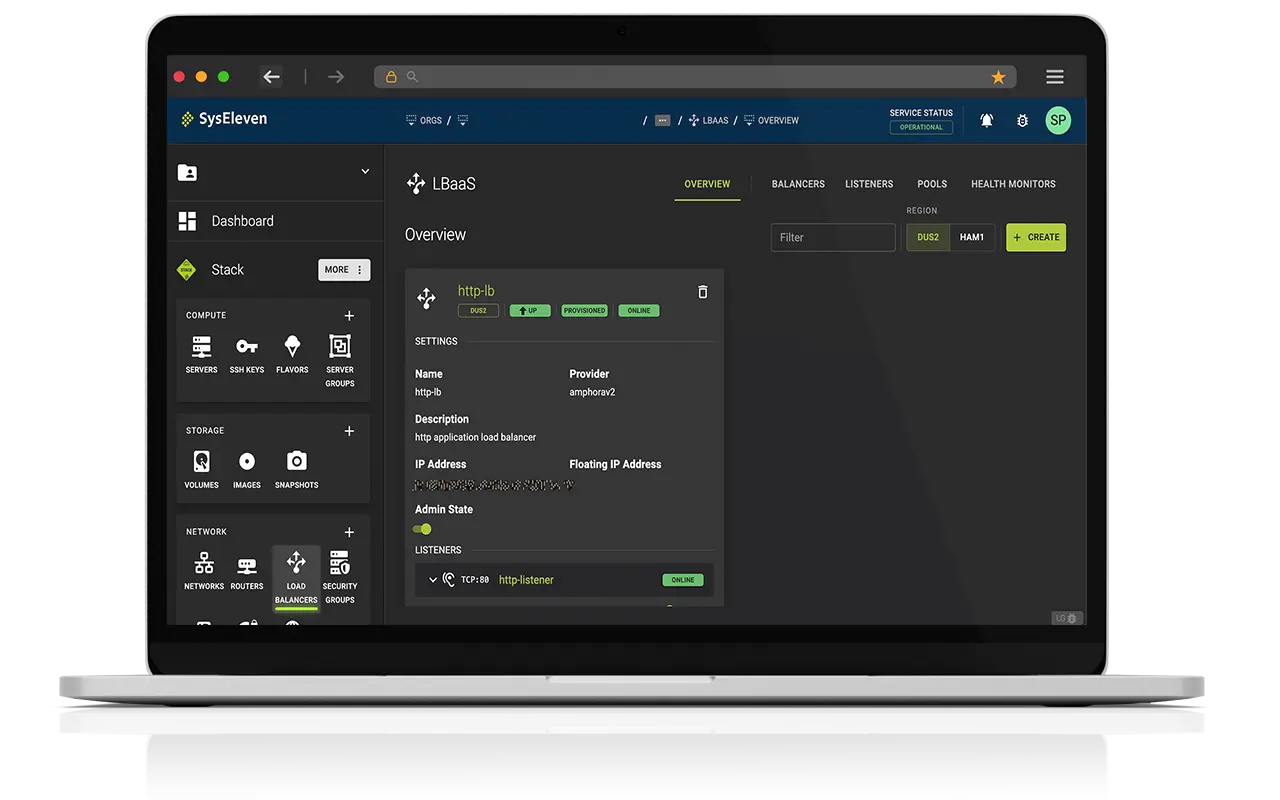Optimal load distribution for maximum availability
LBaaS lets you distribute network traffic efficiently across multiple servers, which ensures optimal performance and availability. Integrated into existing systems, this service enables flexible scaling, high cost efficiency, and maximum reliability.

Scalable load balancing for effortless expansion of your cloud infrastructure
SysEleven Octavia LBaaS supports you with various features, including load balancing for HTTP, HTTPS, and TCP-based services. These functions are crucial for secure, highly available, and efficient access to HTTP APIs. They act as a secure access point that creates a boundary between untrusted and trusted zones. Additionally, Octavia handles routing, central monitoring of HTTP requests, and SSL termination and offloads these tasks from the backend servers.
Load balancer service
The SysEleven Load Balancer is technically based on OpenStack Octavia/amphorae. Amphorae are dedicated instances of the load balancer that are managed by SysEleven (as a service).

Companies that already trust us







All features at one glance
High availability
Your IT infrastructure stays available reliably and is protected from failures – even during peak loads.

Health monitoring
Constant monitoring of backend servers and traffic redirection in the event of a failure.

Advanced HTTP routing
Enhanced support for routing HTTP requests.

Traffic inspection
Monitoring and analyzing network traffic to detect potential threats.

Traffic monitoring and logging
Real-time analysis and logging of network traffic.

SSL termination
Secure SSL protocol termination to efficiently offload backend servers.

Use Cases

Scaling e-learning platforms
During exam periods and when releasing new learning materials, LBaaS with Octavia is used to make a large online university’s e-learning platform accessible worldwide. Load balancing ensures that all students can access the platform simultaneously without delays or outages.

Supporting complex SaaS applications
An SaaS company benefits from LBaaS with Octavia by using it to manage traffic for its cloud-based applications. With Layer 7 routing and automated failover, a stable and highly available platform is created that reliably meets complex application requirements.

Managing telematics and vehicle data systems
A leading automotive manufacturer uses LBaaS with Octavia to manage telematics and vehicle data systems. This solution evenly distributes traffic across multiple servers, which enables the reliable collection and processing of real-time vehicle data. These make the foundation for connected vehicle systems.
Pricing
Du kannst bei der Wahl des Load Balancers zwischen zwischen Single Instance und Double Instance wählen.
Single Instance
-
On demand
Double Instance
-
On demand
* These are ex prices. The complete price list can be requested at sales@syseleven.de
Pricing
You can choose between Single Instance and Double Instance when selecting the load balancer.
* These are ex prices. The complete price list can be requested at sales@syseleven.de
FAQs
There are various types of load balancing, but generally, it works as follows:
- Workload detection: A load balancer monitors the workload on available resources, such as servers, network connections, or application instances. This can be done by monitoring loads on CPU, memory, network traffic, or other metrics.
- Distribution strategy: The load balancer selects how to distribute incoming requests among the available servers based on various algorithms.
- Request forwarding: The requests are then forwarded to the selected resources, such as to servers in a server cluster, or by switching between different network paths and routes.
Why Is load balancing important?
Load balancing offers a range of benefits, including:
- Scalability: A website or application can handle increases in data traffic without losing performance by evenly distributing the load across multiple servers.
- Redundancy: In the event of a server failure, the load balancer can automatically redirect traffic to other functioning servers. This increases fault tolerance and minimizes downtime.
- Optimized performance: Load balancing can improve response times and make sure that resource utilization stays stable by assigning requests to the most suitable server.
- Flexibility: Load balancers can also prioritize certain types of traffic or reserve specific servers for special tasks, increasing the network’s flexibility and efficiency.
Get in touch with us
Are you interested in Load Balancing as a Service? Please get in touch with us.
We’ll take a look at the requirements for your software project together.
If you wish to submit a form via HubSpot forms, we require your consent to load this service. You can revoke your consent at any time with future effect via “Edit cookies” in the footer.
Further information

